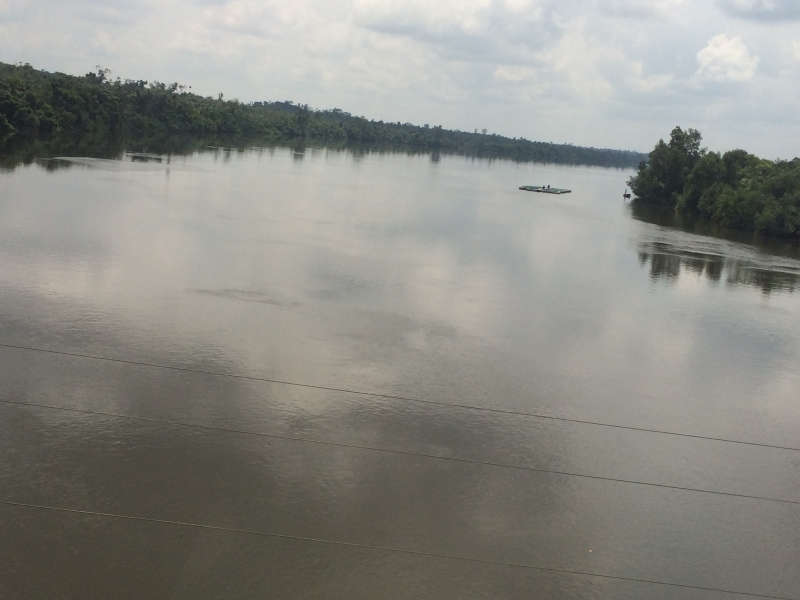Wouri

The Wouri (sometimes spelled Vouri or Vuri) is a Cameroonian river. This river is in the top longest rivers in Cameroon. Cameroon has two significant rivers: the Sanaga, which is around 525 kilometers (325 miles) long, and the Wouri, which is about 500 kilometers (325 miles) long. The Wouri is formed at the junction of the Nkam and Makombé rivers, 32 kilometers (20 miles) northeast of Yabassi. It then runs southeast for about 160 kilometers (99 miles) to the Wouri estuary in Douala, Cameroon's main port and industrial metropolis on the Gulf of Guinea. About 64 kilometers (40 miles) upriver from Douala, the river is navigable.
Around the year 1472, the Portuguese navigator and explorer Ferno do Pó or Fernando Poo is thought to have been the first European to explore the Wouri estuary. The mud lobster Lepidophthalmus turneranus was abundant in the Wouri River, thus the explorers named it "Rio dos Camares," Portuguese for "River of Prawns," and the phrase from which Cameroon was derived. When the Spanish arrived in the area, the phrase "Rio dos Camares" became Camarones. The country's name was changed to Kamerun during the German protectorate, which began in 1884, until the Treaty of Versailles placed the country under French and British sovereignty in 1919, leading to the ultimate name "Cameroon."
Length: 525 kilometers (325 miles)











